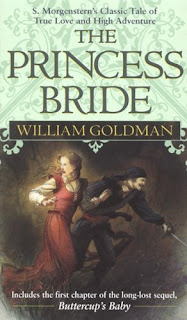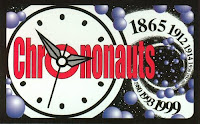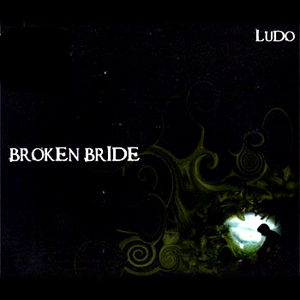Author: William Goldman
Genre: Fantasy / Fiction
Rating: 3.5 out of 5 Rodents Of Unusual Size
"Fencing. Fighting. Torture. Poison. True love. Hate. Revenge. Giants. Hunters. Bad men. Good men. Beautifulest ladies. Snakes. Spiders. Beasts of all natures and descriptions. Pain. Death. Brave men. Coward men. Strongest men. Chases. Escapes. Lies. Truths. Passion. Miracles."
All of this and more can be found within the pages of The Princess Bride, by William Goldman. I grew up watching the movie of the same name, and recently decided to read the novel it was based on. Doing so was a bitter-sweet experience, however...
First: A disclaimer. On the front cover and throughout the book, we are lead to believe that The Princess Bride was written by a man named S. Morgenstern, and that William Goldman is simply taking this long novel and abridging it, cutting out the bland parts and leaving only "the good bits". This is not true. There is no such person as S. Morgenstern. There is no "original" version of The Princess Bride, so don't waste your time looking. I know I did... Because of this writing style, which I will discuss later on, I feel that I must review this book in two parts. The first part will be a review of "what S. Morgenstern wrote" (again, he neither exists nor wrote anything). This includes all of the True Love and High Adventure that the movie was based on. The second part will be a review of the annotations and comments that William Goldman writes throughout the novel (apart from the actual novel - the entirety of which, once again, he wrote). Confused yet? Excellent, let's begin...
The Princess Bride tells the story of Buttercup (the most beautiful woman in the world) and Westley (a poor farm boy, formerly in the employ of Buttercup's father) as they fight to be together in a world that they quickly learn is unfair. Buttercup, being the most beautiful woman in the world, is forced to marry Prince Humperdinck, the rotten prince of Florin. Before the wedding, however, she is kidnapped by a giant Turk named Fezzik, a masterful fencing Spaniard named Inigo, and an evil mastermind named Vizzini. Vizzini plans to start a war by framing a neighboring country with Buttercup's death and enraging the Prince and Florin. However, all of this begins to unravel when a mysterious man in black shows up.
This story combines solid characters, beautifully conceived settings, and a great plot. In terms of characters, in the first few chapters, we get to see how Buttercup behaves in her younger years. It seems she was not always a charming little princess. She was once a spoiled girl who only enjoyed tormenting the local farm boy and riding her horse. The characters of Fezzik and Inigo are also really fleshed out. Each has their own chapter which discusses the circumstances of their employment with the evil Vizzini. Throughout the novel, these foundations are built upon and the characters all change before the reader's eyes. The settings of this novel are also great. Locations such as the Cliffs of Insanity, the Fire Swamp, and the Zoo of Death are all as colorful as their names suggest. Finally, in terms of the plot, all I can say is that The Princess Bride really is a "Tale of True Love and High Adventure".
If I were simply reviewing the tale that "S. Morgenstern wrote", or perhaps the movie (which was incredibly faithful to the book), my review would end there with a great 5 out of 5 rating. Unfortunately, because of the way in which Goldman wrote the novel, I need to continue...
As I alluded to earlier, I spent a lot of time trying to track down the original version of this novel by S. Morgenstern. I've never been one to read abridged versions of novels. It is my belief that if the author wrote something, it was meant to be read. I found my further research very frustrating, and eventually discovered that I held the original version in my hand, and that Goldman used this "abridgment" business as a literary device.
Instead of just "abridging" the novel, however (which I would think just involves cutting passages out), Goldman includes a page or two of his own thoughts every time he makes a cut. Sometimes he criticizes Morgenstern, other times he asks the reader rhetorical questions, still other times he insults his publishers or makes fun of his overweight child. That's right. Whether or not Goldman really hates his publishers or really has an overweight child, he uses this literary device to cut into some of the most action-packed scenes to give us snippets of his "life".
The purpose of this is beyond me. Perhaps it is to make The Princess Bride more unique. After all, I have never read another book that did this. However, in a stroke of irony, these cuts perform the opposite of what an abridgment should be. Instead of cutting out boring passages, they interrupt the flow of the novel. Instead of leaving the "good bits", Goldman's device includes needless passages that I just want to skip over. Perhaps this irony is what Goldman was trying to accomplish all along, but that still doesn't change the fact that the story would be better without it.
Finally, my version of the novel (ISBN 0-345-34803-6) contains "the first chapter of the long-lost sequel, Buttercup's Baby". Note: There is no such thing as a full sequel entitled Buttercup's Baby. Much like the novel, Goldman pretends to abridge the first chapter of the non-existent sequel written by the non-existent Morgenstern. Although Goldman once stated that he would have liked to write a full version of Buttercup's Baby, he said he could never do it. Do you want my advice? Don't read it. It is a confusing mess that only leaves the reader underwhelmed at the end of the novel. Actually, don't read any of Goldman's annotations. Actually, you're probably better off just watching the movie, as this condenses all of the author's nonsense into a true "good bits" version. The flimsy literary device employed in the novel gets a disappointing rating of 2 out of 5, which averages out to...
3.5 out of 5 Rodents Of Unusual Size.


















